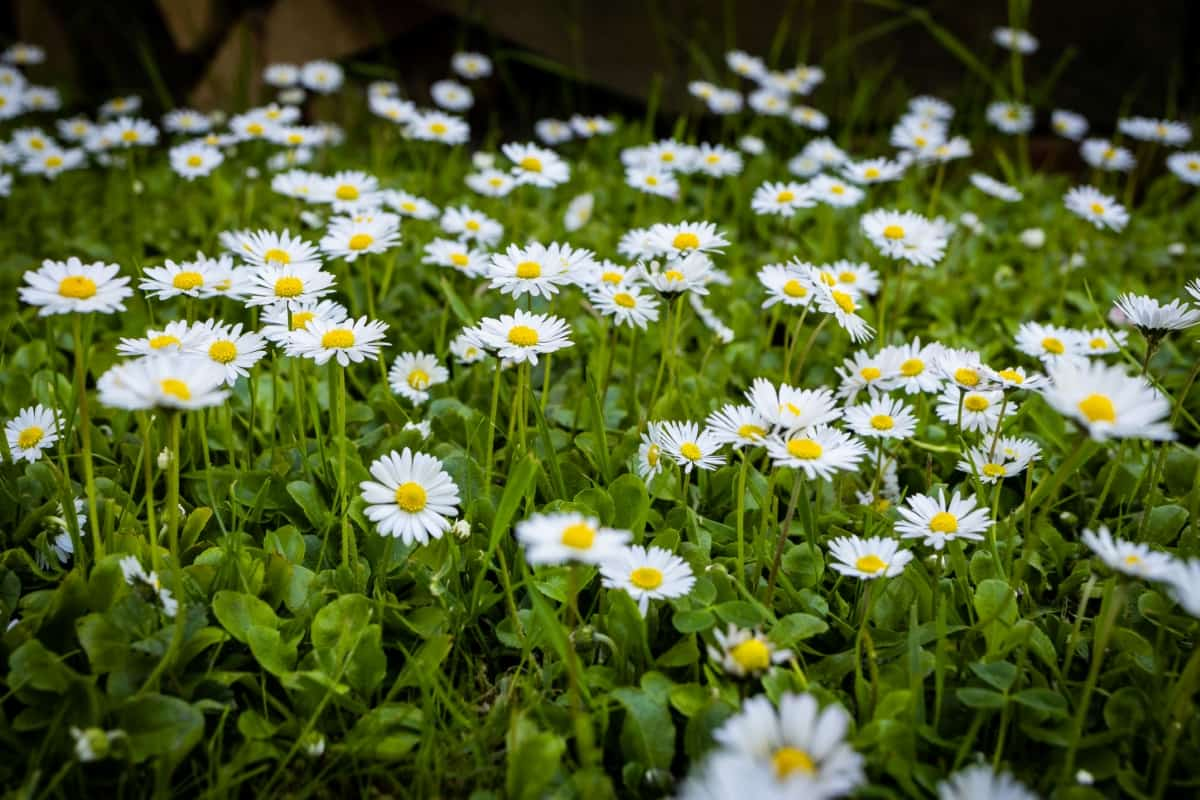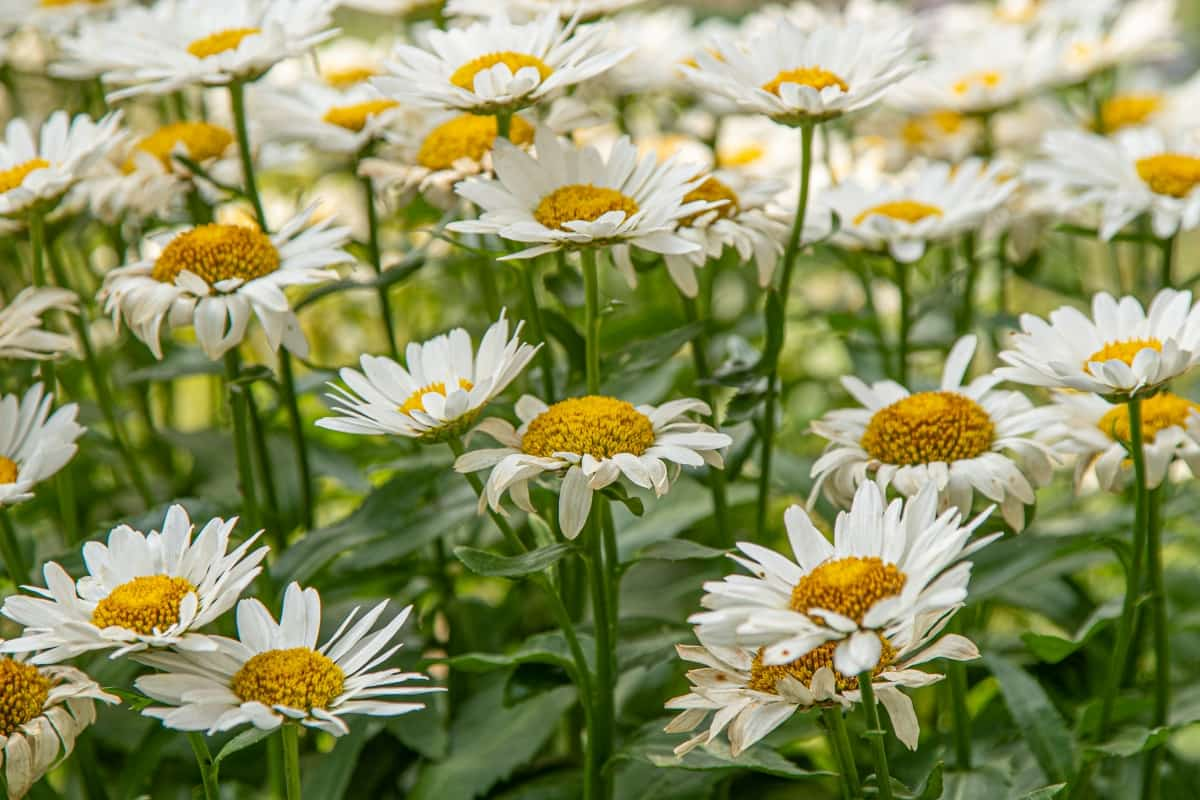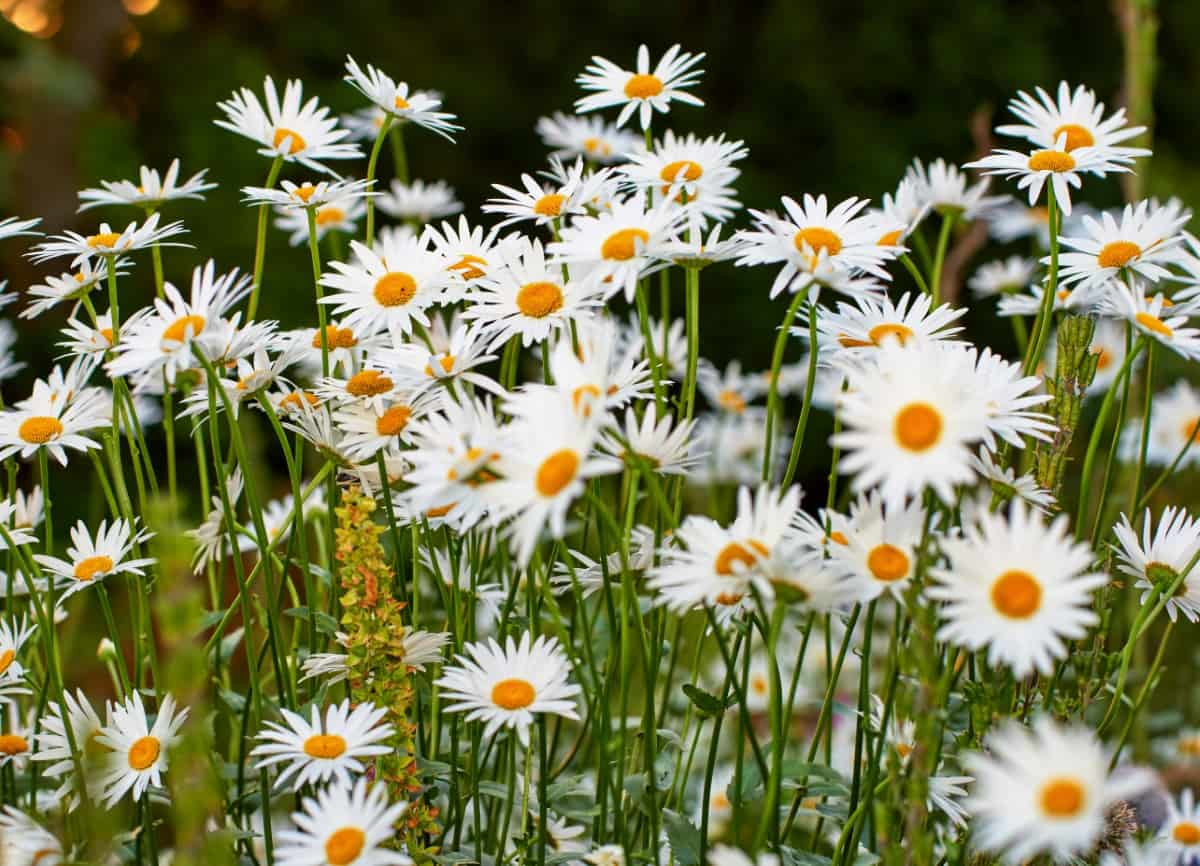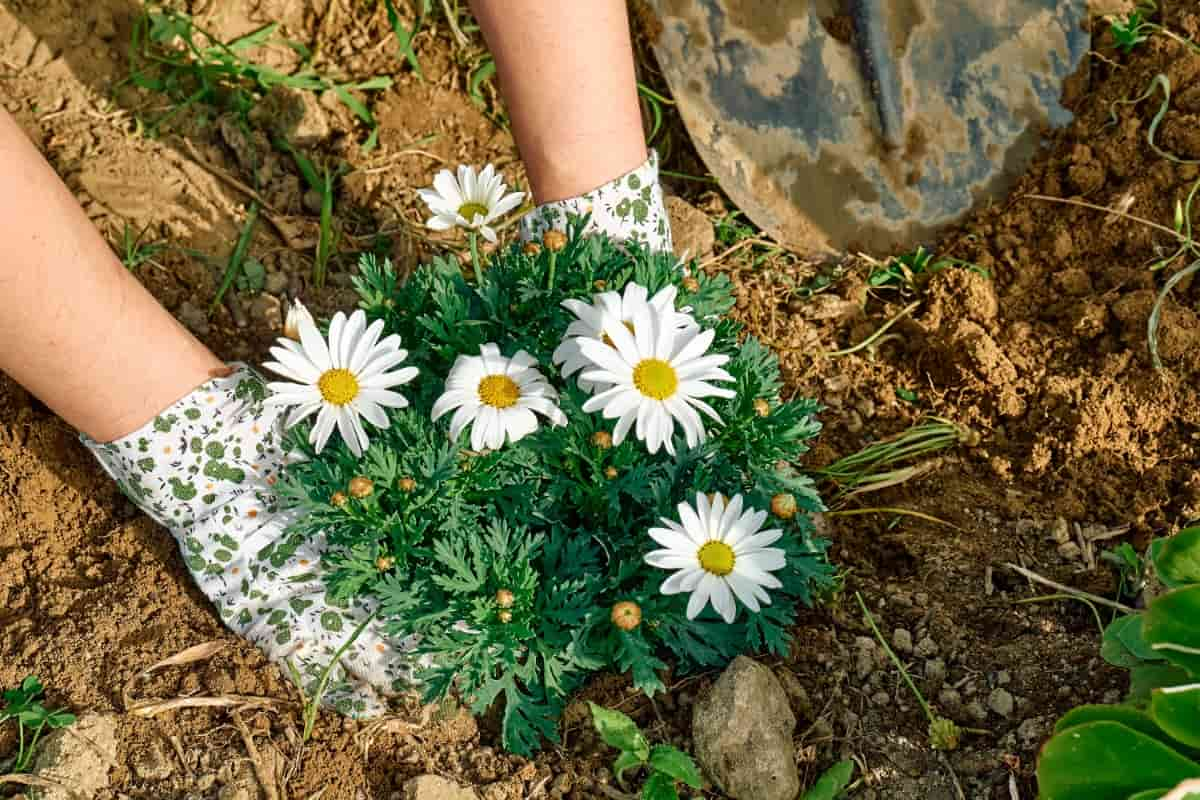With their delicate leaves and cheerful blossoms, daisies are occasionally susceptible to issues that compromise their health and appearance. It is vital to comprehend the underlying factors that contribute to leaf and flower-related issues in order to preserve their aesthetic appeal. This blog will discuss prevalent issues, including withering, discoloration, and insect damage, as well as effective natural and at-home remedies for these problems.

How to Fix Daisy Leaf and Flower Problems
About Daisy Plant
Daisies, belonging to the Asteraceae family, are known for their colorful, simple, and delicate flowers. They are perennial plants that thrive in various climates and are relatively low-maintenance, making them a favorite among gardeners. Daisies are beloved flowers known for their simplicity and beauty.
Growing daisies is relatively straightforward. They thrive in well-drained soil, full sun to partial shade, and moderate temperatures. Characteristically, daisies have a central disk surrounded by petals that can range in color from classic white to vibrant yellows, pinks, and reds.
Yellowing Leaves
Yellowing leaves on daisy plants can indicate various underlying issues, such as nutrient deficiencies, overwatering, or poor soil drainage. To address this problem, it is important to assess the plant’s growing conditions and adjust watering and fertilization practices accordingly. Incorporating organic matter into the soil improve its nutrient content and promote healthy foliage growth.
Brown Leaf Tips or Edges
Brown leaf tips or edges on daisy plants may result from environmental stress, inadequate watering, or excessive fertilizer application. To remedy this issue, it is essential to maintain moisture levels in the soil and avoid over-fertilization. Trimming the affected areas of the leaves can also promote new growth and enhance the overall appearance of the plant.
Leaf Spot Diseases
Leaf spot diseases, caused by fungal and bacterial pathogens, can lead to the development of dark, circular lesions on daisy plant leaves. To combat leaf spot diseases, it is crucial to practice good sanitation by removing and disposing of affected leaves. Additionally, applying organic fungicides or neem oil prevent the spread of the disease and protect the plant’s foliage.
Powdery Mildew
Powdery mildew, characterized by a white powdery substance on the leaves, is a common issue that affects daisy plants, especially in humid conditions. To prevent powdery mildew, maintain proper air circulation around the plants and avoid overhead watering. Natural remedies, such as sulfur-based fungicides or baking soda solutions, can also be effective in controlling powdery mildew and preserving the plant’s health.
Pests (Aphids, Slugs, Snails)
Daisy plants are susceptible to pests such as aphids, slugs, and snails, which can cause damage to the foliage and flowers. Implementing natural pest control methods, like introducing beneficial insects or using organic insecticidal soaps, can help manage pest infestations effectively. Creating environment for natural predators of pests, such as ladybugs and lacewings, can also contribute to pest management in the garden.
In case you missed it: Using Sevin Dust on Flowering Plants: Guide for How and When to Apply

Flower Bud Blast
Flower bud blast, where flower buds fail to open or prematurely drop, can be attributed to environmental stress, nutrient imbalances, or fungal infections. To address this issue, ensuring consistent watering and providing adequate sunlight can support healthy bud development. Additionally, applying a balanced fertilizer specifically formulated for flowering plants can encourage robust bud formation and enhance the overall flower quality.
Lack of Flowering
A lack of flowering in daisy plants may be influenced by factors such as insufficient sunlight, overcrowding, or inadequate nutrition. To promote flowering, it is essential to assess the plant’s growing environment and make adjustments as needed. Thinning out overcrowded growth, providing appropriate fertilization, and ensuring optimal sunlight exposure can stimulate flower production and enhance the visual appeal of the plant.
Wilting Leaves
Wilting leaves on daisy plants can indicate water stress, root rot, or pest infestations. To address wilting, the plant’s watering regimen must be evaluated and adjusted to maintain adequate moisture levels. Proper drainage and soil aeration can help prevent waterlogged conditions and mitigate the risk of root rot. Additionally, incorporating natural pest control measures can help manage potential pest-related issues that may contribute to wilting foliage.
Leaf Curling
Environmental stress, pest infestations, or viral infections can cause leaf curling in daisy plants. Proper identification of the underlying cause for addressing this issue effectively. Providing optimal growing conditions, such as adequate moisture and sunlight, can help alleviate environmental stress and promote healthy leaf development.
Implementing pest management strategies, including the use of natural predators or insecticidal treatments, can mitigate pest-related leaf curling. Additionally, removing and disposing of severely affected leaves prevents the spread of viral infections and promotes the overall health of the plant.
Chlorosis (Leaf Yellowing with Green Veins)
Chlorosis, characterized by leaf yellowing with prominent green veins, often indicates nutrient deficiencies, particularly iron or nitrogen. To remedy chlorosis, supplementing the soil with appropriate fertilizers containing micronutrients can address underlying deficiencies and restore the foliage’s vibrant green coloration. Additionally, incorporating organic matter into the soil and practicing proper watering techniques can support the plant’s overall nutrient uptake and health.
In case you missed it: How to Deal with Japanese Beetles in Flower and Vegetable Gardens

Gerbera Daisy Care: Tips for Healthy Growth
Gerbera daisies, known for their colors and beauty, are a popular choice for gardens and indoor spaces. However, they are not without their challenges. Gerbera daisies can encounter various problems, including diseases, pest infestations, and environmental stressors. These issues can hinder their growth and affect their overall health.
Proper care and maintenance are required to prevent diseases in Gerbera daisies. Tips include using well-draining soil, watering properly, fertilizing regularly, and pruning dead or diseased leaves and flowers. These measures can control diseases like powdery mildew, root rot, and bacterial leaf spot.
Pest Control
Pests like aphids, spider mites, and thrips can damage Gerbera daisies. Natural remedies like neem oil or garlic sprays, introducing beneficial insects, and maintaining a clean garden can help control pest populations. Gerbera daisies are sensitive to environmental changes, so adjusting conditions as needed is crucial. Adequate lighting, temperature control, and humidity maintenance are vital for optimal growth. Providing bright, indirect light, maintaining temperatures between 60 and 75 degrees Fahrenheit, and ensuring moderate humidity levels will support healthy growth.
Proper Care Techniques
Proper care techniques for Gerbera daisies include appropriate watering, lighting, soil, and fertilizer management. Watering once a week, providing at least six hours of sunlight per day, using well-draining soil, and fertilizing monthly with a balanced fertilizer are essential practices to keep the plants healthy and blooming.
In case you missed it: Using Neem Oil in Rose Gardening: Natural and Organic Solution for Rose Pest Management

Gerbera daisies address topics such as blooming, treating fungus, common pests and diseases, powdery mildew, and suitability for pots or ground planting. Answers include tips for deadheading spent blooms, using fungicides for fungal diseases, controlling aphids with mild solutions or natural predators, and considerations for pot versus ground planting based on climate.
Conclusion
Addressing daisy leaf and flower problems requires attentiveness and proactive measures. By understanding the causes behind these issues and utilizing natural and home remedies, you can effectively restore the health and beauty of your daisies and ensure they continue to brighten your surroundings with their charm and vibrancy.
- Beneficial Insects in Pest Management
- Natural Solutions for Pest Control in Flower Gardens
- Types of Fungicides Used in Agriculture
- Common Issues in the Fruit Development Stage of Pomegranate Farming
- Fruit Development Issues in Papaya: Easy Solutions and Treatment
- Soil-Borne Diseases and How to Protect Your Plants
- Practices to Prevent Disease Spread in the Garden
- From Wilted to Thriving: How to Treat Root Rot Naturally in Houseplants
- Natural Remedies to Cure Brown Spots on Fig Tree Leaves